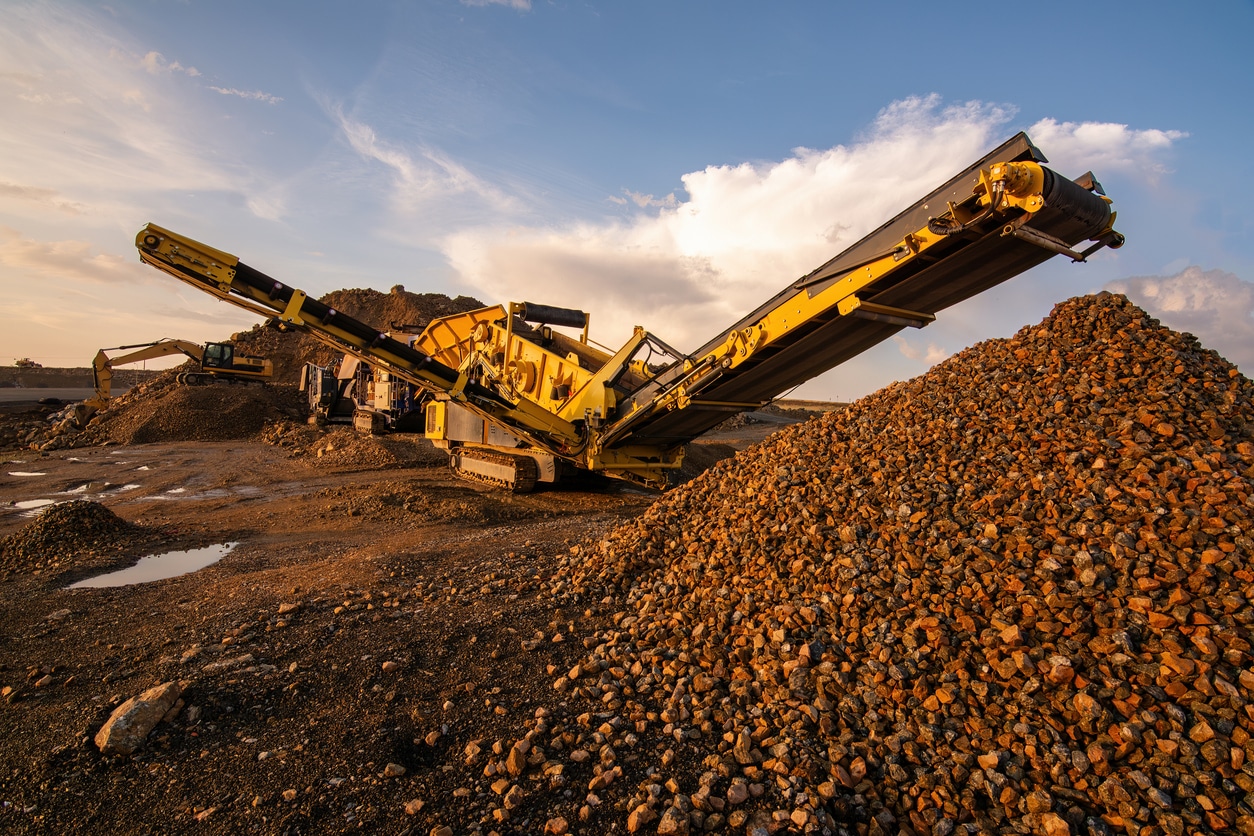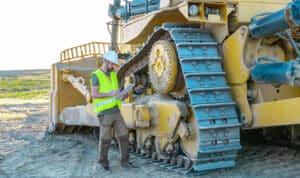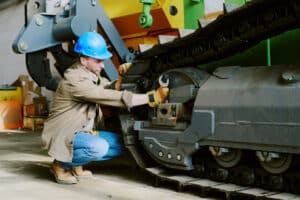
Key Takeaways:
Proper aggregate equipment maintenance reduces downtime, extends machine life, and protects your bottom line. Business owners should prioritize daily inspections, lubrication schedules, wear-part replacements and seasonal service. Building a consistent aggregate equipment maintenance checklist ensures safety, maximizes productivity, and keeps costly repairs from cutting into profitability.
Aggregate equipment is the backbone of crushing, screening and material handling operations. Whether you’re running a quarry, sand and gravel pit, or construction recycling site, your profitability depends on consistent uptime. Unplanned breakdowns not only stall production, but also create ripple effects such as missed deadlines, idle labor and costly emergency repairs.
That’s where a structured aggregate equipment maintenance checklist comes in. Following a disciplined approach ensures your equipment runs smoothly, reduces unexpected failures and gives operators the confidence to push your aggregate equipment to its full capacity. The following checklist will help you stay on top of the most important aggregate equipment maintenance tasks.
Daily Maintenance Essentials
 Daily checks are your first line of defense. These tasks are simple, quick and often prevent major problems down the road.
Daily checks are your first line of defense. These tasks are simple, quick and often prevent major problems down the road.
- Visual Inspections – Look for cracks, leaks, loose bolts and unusual wear. Small issues spotted early can be fixed before they escalate.
- Fluid Levels – Check engine oil, coolant and hydraulic fluid levels. Low or contaminated fluids are a leading cause of equipment damage.
- Lubrication Points – Apply grease to bearings, joints and moving parts per the manufacturer’s guidelines. Neglected lubrication leads to excessive wear.
- Cleanliness – Clear debris from belts, conveyors and guarding. Excess build-up not only causes inefficiency, but also poses fire and safety risks.
Weekly Maintenance Checklist
Weekly tasks involve a closer inspection and adjustment to keep aggregate equipment aligned and performing.
- Belt Tension and Tracking – Check conveyor belts for proper tension and alignment. A slipping or misaligned belt can cause uneven wear and spillage.
- Screens and Crushers – Inspect screen media for tears and crusher liners for wear. Replace before failure to avoid unplanned downtime.
- Hydraulic Systems – Look for leaks, damaged hoses or pressure inconsistencies. Addressing issues now prevents larger failures.
- Electrical Components – Inspect wiring, connections and control panels for damage or overheating signs.
Monthly Maintenance Tasks
Monthly maintenance goes deeper into performance optimization.
- Lubricant Replacement – Rotate and replace lubricants in gearboxes and bearings to maintain efficiency.
- Structural Integrity – Inspect frames, welds and support structures for cracks or fatigue.
- Calibration and Adjustments – Check machine settings to ensure output specifications are being met.
- Filter Changes – Replace air, fuel and hydraulic filters to protect engines and sensitive components.
Seasonal and Annual Maintenance
 Aggregate equipment faces additional wear due to environmental conditions. Preparing for seasonal changes helps minimize downtime.
Aggregate equipment faces additional wear due to environmental conditions. Preparing for seasonal changes helps minimize downtime.
- Cold Weather Prep – Use winter-grade lubricants, inspect heaters and ensure batteries are strong enough for low temperatures.
- Hot Weather Prep – Check cooling systems, clean radiators and ensure proper airflow to prevent overheating.
- Annual Overhaul – Schedule a full inspection with your aggregate equipment dealer. Replace wear liners, rebuild components as needed and review operating hours against manufacturer service intervals.
Safety Considerations
Maintenance isn’t just about uptime, it’s about protecting your crew. Staying on top of the following safety items will minimize the risk of injury.
- Lockout/Tagout Procedures – Always follow proper shutdown procedures before performing maintenance.
- Guarding Inspections – Verify that guards, shields, and safety devices are intact and functional.
- Training and Documentation – Train operators to perform inspections and log findings. A culture of accountability improves both safety and performance.
Building a Custom Maintenance Schedule
While this checklist provides a strong baseline, every operation is unique. Factors like material abrasiveness, operating hours, and environmental conditions influence wear and tear. Work with your aggregate equipment dealer to build a tailored maintenance plan that balances cost, downtime, and productivity.
A well-structured aggregate equipment maintenance schedule:
- Extends equipment lifespan
- Reduces emergency repairs
- Improves fuel efficiency
- Ensures consistent product output
- Increases resale value
Power Screening Can Help
At Power Screening, we’re much more than just your aggregate equipment supplier. We’re also your dedicated maintenance partner. We provide comprehensive maintenance services to ensure your equipment is running properly year-round, allowing you to maximize the lifespan of your machines and minimize the risk of unexpected downtime.
Power Screening has been the leading aggregate equipment dealer in the Rocky Mountain region since 1984. When you work with us for all your equipment maintenance, you’ll benefit from OEM parts, factory-trained technicians and service agreements that keep your fleet performing at its peak. Relying on our expertise for major inspections and rebuilds gives your operation the peace of mind that your equipment is properly maintained to factory standards.
Contact us today to learn more about our aggregate equipment. Power Screening serves customers in Idaho, Utah, New Mexico, Colorado, Wyoming, Kansas and Nebraska.
